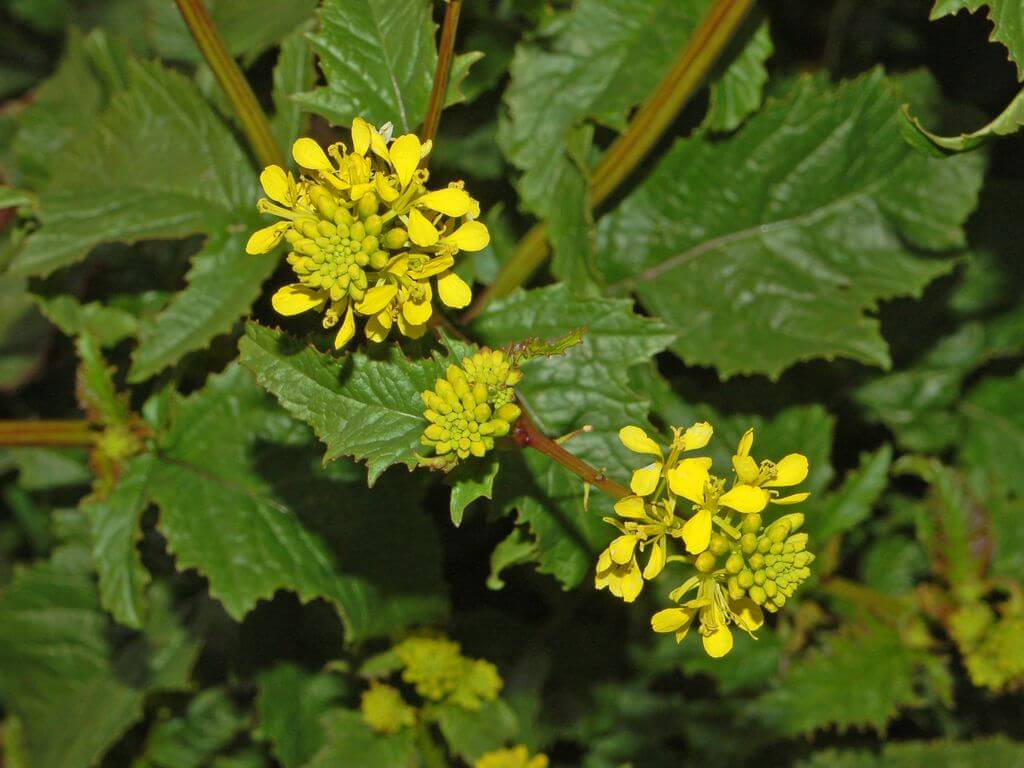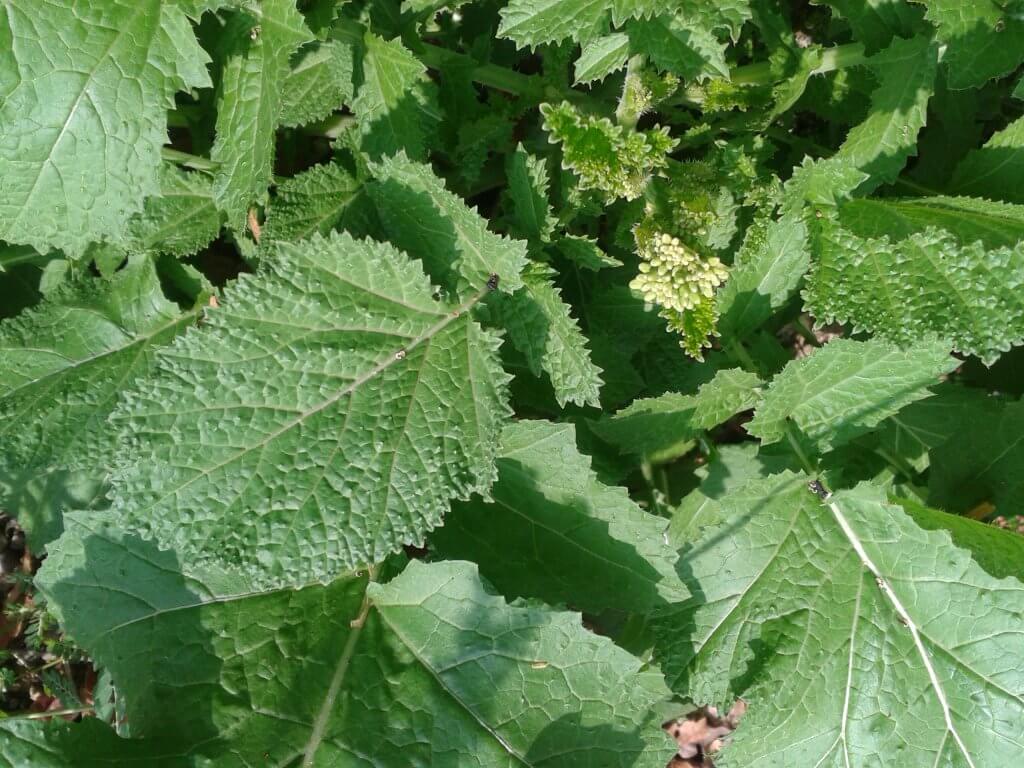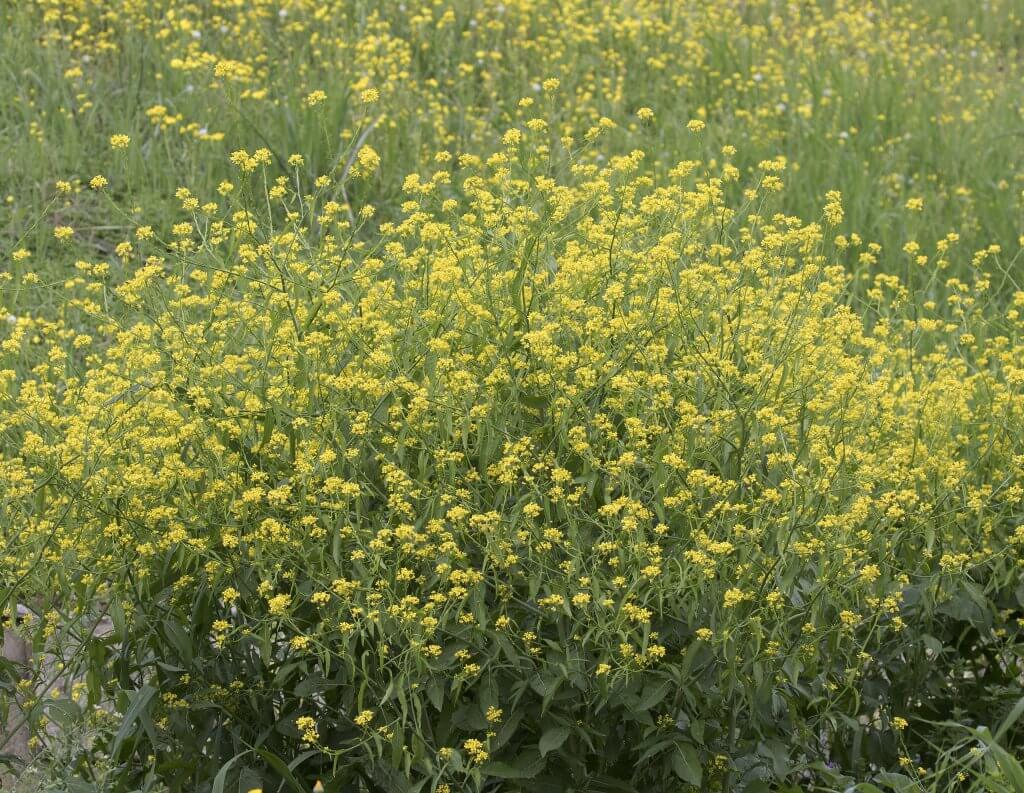Wild Mustard (Sinapis arvensis) is a species of plant that belongs to the broad, mustard family (Brassicaceae). This family contains a huge number of species, exceeding well over 4000, another wild edible included in this family is winter cress. Other notable members include a high number of commercially farmed plants, including broccoli, kale and cabbage.
Other common names for wild mustard include, field mustard and charlock, which is a name commonly used in the UK. The first wild mustards were endemic to North Africa, Europe and Asia, eventually spreading throughout most of the world via trading and colonisation.

You’ll now find wild mustard growing within every state in North America. Its usual habitat varying from farmed fields, meadows, and areas of urban development, like roadsides and path edges. It prefers sunny areas with little shade and chalky, well draining soils.
Wild mustard is an annual, reaching a maximum height of roughly 80cm. It features a number of branched hairy stems bearing long lanceolate leaves at the base, and shorter oval shaped leaves nearer the top. When flowering throughout late Spring and early Fall, you will see clusters of bright dandelion yellow flowers. During the fall a large number of long seed pods appear, each containing a small number of mustard seeds.
Edible parts and other uses
The young leaves, flower buds and seeds are all edible, and vary in spiciness, with leaves and seeds holding most of the peppery flavoring. Young leaves can be added into a salad or sandwich, whereas older leaves will be much more palatable if cooked.
The flower buds can be cooked in much the same way as broccoli, meaning they would work well in a stir fry or curry. The bright flowers can also be added into a salad to add mild spiciness and also a pop of color.
You can use the seeds to create your own mustard condiment or even mustard powder. For a typical mustard condiment, grind the seeds and mix with a splash of water and vinegar to create a smooth paste.

Cautions
Although wild mustard is not considered toxic, it must only be consumed in moderation. The compounds that create the spiced, peppery taste can cause stomach upset if eaten in large amounts. It has no toxic lookalikes, so is considered safe to eat after careful identification.
You must also take care with the areas from which you are harvesting wild mustard from. Farmers fields with small clusters of wild mustard may have been treated with a herbicide. To avoid contaminated plants, foraging should occur only in wild areas or from your own yard.
Occasionally people can find that they are allergic to wild mustard, so if foraging for the first time try a tiny portion before beginning to incorporate it into your meals.
Foraging
Wild mustard is considered an invasive species, so it will not be long before you happen upon a patch. Harvest as much as you need.
The flowers appear in spring and tend to bloom throughout the summer. Each flower has four petals in a cross shape. The flowers are bright yellow, but can be white in some varieties.

Did you know…
The roots of wild mustard contain a compound which can actually inhibit the growth of other nearby plants. Therefore as a non-native, invasive species, lots of foraging is encouraged!
Conclusion
With its sweet, peppery taste, wild mustard is a particularly tasty plant to forage locally. It can be found in a number of locations and is easy to grow at home if you preferred your own local source. It spreads very quickly, so be sure to keep it in a pot, or harvest the seed pods before they begin to drop.
—————Written by Hannah Sweet
Hannah is a freelance writer and graphic designer from the UK. With a penchant for travelling, photography and all things botanical, she enjoys writing about a wealth of topics and issues, from conservation and slow living, to design and travel. Learn more about her writing and design services at www.sweetmeanders.co
Many of our readers find that subscribing to Eat The Planet is the best way to make sure they don't miss any of our valuable information about wild edibles.
See our privacy policy for more information about ads on this site







One Response
Glad you have information. Never knew you could eat the mustard plant. Always thought I was a weed. As a child we always had to pick it out of the field so it would interfere with the crops